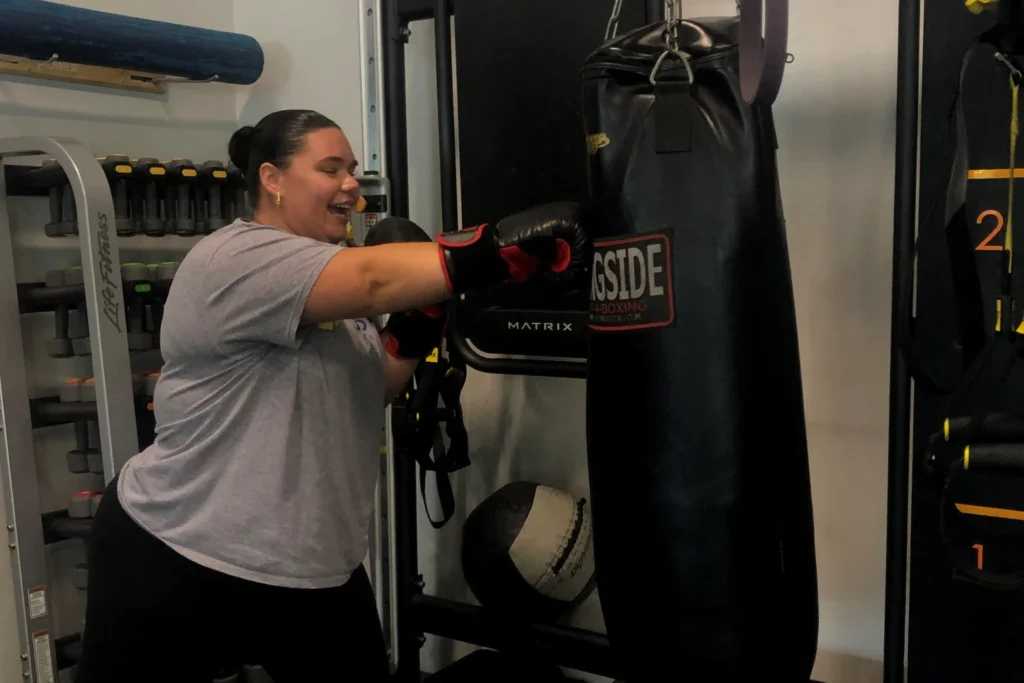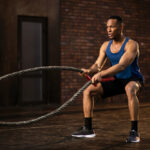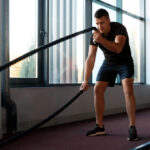One of the cornerstone movements in kettlebell training is the deadlift. This fundamental exercise is known for its ability to engage multiple muscle groups, making it a powerful component of any strength training regimen. However, the true beauty of kettlebell deadlifts lies in their adaptability. By exploring various deadlift variations, you can stimulate different muscle groups, prevent workout monotony, and continuously challenge your body to improve. This guide will introduce you to several kettlebell deadlift variations that can take your strength training routine to the next level, each tailored to enhance different aspects of your physical fitness.
Basic kettlebell deadlift
Proper technique is crucial for reaping the benefits of kettlebell deadlifts while avoiding injury. Begin with the kettlebell placed between your feet, which should be about shoulder-width apart. Bend at the hips and knees, sending your hips back while keeping your chest up and back flat.
Grasp the kettlebell handle with both hands, tighten your core, and lift by pushing through your heels, extending your hips and knees simultaneously. Finish the movement by standing tall, pulling your shoulders back and locking your hips.
Common mistakes that beginners make
Many beginners tend to lift with their back rather than their legs, leading to undue strain on the lower back.
Another frequent error is lifting the heels off the ground, which can reduce stability and increase the risk of injury.
Always ensure that your movements are smooth and controlled, avoiding any jerky motions or rounding of the back.
Variations of kettlebell deadlifts
Here are our favorite variations you can try:
Sumo kettlebell deadlift
Adopt a wider stance with this variation, and turn your toes outward. The sumo stance shifts more of the workload to your inner thighs and glutes and allows for a more upright torso, which can be beneficial for those with lower back issues. And since some of those issues can be solved with strengthening back muscles, here are top kettlebell exercises for strong back.
Single-leg kettlebell deadlift
This unilateral variation increases the challenge on balance and core stability, engaging the muscles differently than the traditional deadlift. It’s excellent for athletes or anyone looking to improve their balance and unilateral strength.
Kettlebell suitcase deadlift
As if lifting a suitcase, this variation involves standing alongside the kettlebell and lifting it with one hand. It mimics real-world activities like carrying groceries, enhancing grip strength, core stability, and oblique strength.
Advanced variations
If you want to challenge yourself, try these variations:
Kettlebell deadlift with row
This dynamic movement combines a deadlift with a row at the top of the lift, incorporating more of the upper body and enhancing coordination. Perform a traditional kettlebell deadlift but add a row with one or both arms once you reach the standing position.
Kettlebell deadlift to squat
The transition from a deadlift into a squat in one fluid movement. This combination not only challenges your leg strength but also improves your transitional movements, making it ideal for high-intensity functional training.
Kettlebell deadlift with a twist
Incorporate a twist to engage the oblique muscles further. As you lift the kettlebell, rotate your torso to one side, then alternate sides with each rep. This variation is particularly useful for sports that require twisting movements, like golf or tennis.
If you want to learn more about how you can maximize your fitness journey with kettlebells, feel free to reach out to our personal trainers in South Congaree.
How often should I perform kettlebell deadlifts?
Frequency can vary based on your overall fitness goals and workout intensity. Generally, incorporating kettlebell deadlifts 1-2 times per week allows adequate recovery while promoting strength development. Always ensure each workout includes proper warm-up and cool-down sessions.
What kettlebell deadlift variation is the most suitable for beginners?
Beginners should start with the traditional kettlebell deadlift to master the basic movement and technique. Once comfortable, gradually introduce variations like the suitcase deadlift or the sumo deadlift, which are still relatively simple but provide a different challenge.
Final thoughts
These variations not only challenge different muscle groups but also introduce an element of diversity to your workouts, keeping them both engaging and effective. Whether you are a beginner looking to master the basics or an experienced athlete seeking to intensify your regimen, there is a kettlebell deadlift variation that can meet your needs. Remember, the key to success with these exercises is proper form, gradual progression, and consistency.





